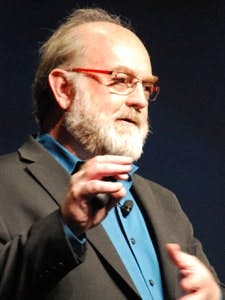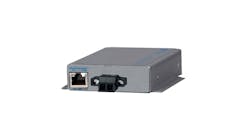Jim Montague is the Executive Editor at Control, Control Design and Industrial Networking magazines. Jim has spent the last 13 years as an editor and brings a wealth of automation and controls knowledge to the position. For the past eight years, Jim worked at Reed Business Information as News Editor for Control Engineering magazine. Jim has a BA in English from Carleton College in Northfield, Minnesota, and lives in Skokie, Illinois.
Check Out Montague's Google+ profile.
This may hurt a little, or a lot, but it will get better. No kidding.Thomas Frey, executive director and senior futurist at the DaVinci Institute estimates that billions of jobs will disappear in the next 15 years due to the Internet of Things (IoT) and many associated technological advances, but these extreme and accelerating changes will also create many new industries and countless new jobs to replace those they've eliminated.
"We're living in an increasingly connected world, and Rockwell Automation is right on the cutting edge of these breakthroughs," said Frey. "We humans are very backward-looking because all our evidence and information is historical. However, we're all going to spend the rest of our lives living in the future, so how can we turn this around? How is the future created? It's in our minds and those of everyone around us. The future creates the present because visions of the future determine our actions today. So if we change our visions of the future, then this will change the actions we take in the present."
Frey presented "The Future of Work" on the opening day of Rockwell Automation's Process Solutions User Group (PSUG) today in Anaheim, California. PSUG is being held in the days leading up to Automation Fair 2014 at the Anaheim Convention Center.
Wake Up and Transition
Frey reported that "catalytic innovations" like electricity, telephones, automobiles and airplanes created multi-billion-dollar industries and millions of jobs in past decades, but most of these fields are now on or near the downward slope of their lifecycle bell curves. Meanwhile, these technologies' peak demand has been preceded by declines in the number of people needed to produce them as efficiency and automation have taken hold.
"Peak demand for steel is estimated to occur in 2024, and then decline as composites and other materials take its place. However, peak employment in steel production already occurred in the 1980s, and so employment can indicate what the future will bring," explained Frey. "I predict that more than 2 billion jobs will disappear by 2030. This needs to be a big wake-up call that we must transition to new kinds of jobs faster then ever before. Those jobs are going away, but this change also frees up human capital. We're not going to run out of work to do, but where is the next generation of jobs going to come from? They will come from all of the future industries that are already emerging."
"We're living in an increasingly connected world." Futurist Thomas Frey anticipates that the industrial Internet will spawn undreamed of new industries even as today's cornerstone industries face inevitable decline.
Similarly, Frey cites Cisco's estimate that the IoT will include 50 billion devices by 2020, which will be assisted by an astounding 100 trillion sensors by 2036. "These sensors will be increasingly tiny, cheap and ubiquitous and will allow more and more people to participate in creating the future," added Frey. "This means just a few individuals will be able to develop innovations and then quickly get them into the mainstream for everyone else to use. We're getting further into this age of hyperawareness and speeded-up information flows."Some of these IoT-enabled "enchanted objects" may include trash cans that can scan package barcodes and order new items; caps on medical prescription packages that can light, chirp and send reminder texts; ambient umbrellas that alert users when bad weather is predicted; biometric coffee makers than can brew according to user preferences; smart chopsticks that can test for food safety; smart contact lenses that will provide HMIs and data flows like Google glass; and countless other undreamed of solutions. All of these new industries and their products will need people to design, manufacture, market, deliver and maintain them.
3D-Printed and Drone-Delivered
Two of the biggest enablers of the IoT-based future will be 3D printing or additive manufacturing and drone technologies, according to Frey. "3D printers are already producing complex textiles and shoes, automobiles and even concrete housing units," he said. "This will create a lot of needs for designers, and so everyone can get involved. In fact, you can already buy a 3D house-printing kit for $16,000 from BetAbram in Slovenia, so I think we'll soon see these devices switching between concrete, glass and materials for plumbing and wiring."
On a more mobile front, Frey believes drones are going to take the automated, guided vehicle (AGV) industry into the air. "Drones are going to in 1,000 different directions," added Frey. "Drones will be used by first responders, rescuers and new organizations. They'll monitor forest for hot spots, and put potential forest fires out when they're easier to extinguish. Huge solar-powered drones from Titan and Ascentra will be able to serve as a cross between very high cellular towers and very low satellites, and allow far more people to access the Internet in developing areas. This will be another huge infrastructure project and employer. We're really entering a periods of unprecedented opportunity, and the future is ours to write."








